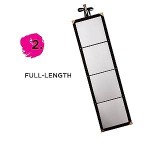How Do I Mirror Windows 10 To Roku?
Screen mirroring, also known as screen casting, allows users to display the content of their Windows 10 device on a larger screen, such as a television, through a Roku streaming device. This functionality is useful for presentations, sharing photos and videos with a larger group, or simply enjoying media on a bigger display. This article details several methods for mirroring Windows 10 to Roku.
1. Using the Built-in "Connect" Feature
Windows 10 includes a built-in feature that allows users to connect wirelessly to Miracast-enabled devices, including some Roku models. To use this feature, ensure both the Windows 10 device and the Roku are connected to the same Wi-Fi network.
To initiate the connection, press the Windows key + K. This action opens the "Connect" pane on the right side of the screen. Windows will begin searching for available devices. The Roku device should appear in the list of available displays. Select the Roku device to initiate the connection.
The Roku device may display a prompt asking to allow the connection. Confirm the connection on the Roku. The Windows 10 screen should now be mirrored on the television connected to the Roku.
Some older Roku devices may not support Miracast. Consult the Roku documentation to verify compatibility.
2. Utilizing the "Play To" Feature for Media Files
The “Play To” feature in Windows 10 offers another method for streaming media content to a Roku device. This feature does not mirror the entire screen but streams specific media files, such as videos, music, and pictures. The Roku device must support DLNA media streaming for this functionality to work.
To utilize the "Play To" feature, right-click on the media file you wish to stream. In the context menu that appears, select the "Cast to Device" or "Play To" option. Windows will search for available devices. Select the Roku from the list of discovered devices.
The media file should begin playing on the television connected to the Roku. Control playback, such as pausing, resuming, and adjusting the volume, can typically be managed from the Windows 10 device.
3. Mirroring through Screen Mirroring Apps
Several third-party screen mirroring applications are available that facilitate mirroring Windows 10 to Roku. These apps often provide additional features and may offer broader compatibility with different Roku models.
Research and select a reputable screen mirroring app from a trusted source. Many applications are available on the Microsoft Store. Install the chosen application on the Windows 10 device. Some apps also require installation of a corresponding receiver app on the Roku device through the Roku Channel Store.
Follow the specific instructions provided by the app developer to configure the connection between the Windows 10 device and the Roku. This typically involves ensuring both devices are on the same network and then initiating the mirroring process from the application interface.
4. Checking for Updates and Troubleshooting
Maintaining updated software on both the Windows 10 device and the Roku device is crucial for optimal performance and compatibility. Regularly check for system updates for Windows 10 through Windows Update and for Roku updates through the device settings.
If encountering connection issues, ensure both devices are connected to the same Wi-Fi network and that the network is functioning correctly. Restarting both devices can often resolve temporary connection problems.
If issues persist, consult the troubleshooting documentation for both the Roku device and the specific mirroring method employed, whether it's the built-in feature, "Play To," or a third-party application. Verifying network settings, firewall configurations, and driver compatibility can often help pinpoint the source of the problem.
5. Understanding the Limitations of Screen Mirroring
Screen mirroring, while useful, does have inherent limitations. Performance can be affected by the strength and stability of the Wi-Fi network. Lag or stuttering can occur if the network is congested or the signal strength is weak.
Protected content, such as some streaming services or copyrighted material, may not be mirrorable due to Digital Rights Management (DRM) restrictions. Be aware of these limitations when attempting to mirror specific content.
6. Choosing the Right Method for Your Needs
The best method for mirroring Windows 10 to Roku depends on the specific requirements. For mirroring the entire desktop, the built-in "Connect" feature or a third-party app is suitable. For streaming specific media files, the "Play To" functionality provides a simpler solution. Consider the advantages and disadvantages of each method to determine the most appropriate option.
7. Hardware Considerations
While most modern Windows 10 devices have built-in Miracast support, some older hardware may not. Verify the specifications of the Windows 10 device to ensure it supports Miracast if using the "Connect" feature. Similarly, confirm the Roku model's compatibility with the chosen mirroring method, as some older Roku devices may not support Miracast or certain screen mirroring apps.

Best Ways To Connect And Cast Windows 10 Roku

How To Cast Roku From Ios Android And Windows 10 In 2024

How To Mirror Windows 10 Roku

How To Screen Mirror From Windows 10 Roku Follow The Guide Minitool Partition Wizard

How To Mirror Windows 10 Roku

How To Cast Roku From Ios Android And Windows 10 In 2024

How To Screen Mirror Windows Pc Roku

How To Screen Mirror From Windows 10 Roku Follow The Guide Minitool Partition Wizard

How To Use Screen Mirroring With Your Android Or Windows Device Roku

How To Cast Pc Roku And Display Screen On Tv








